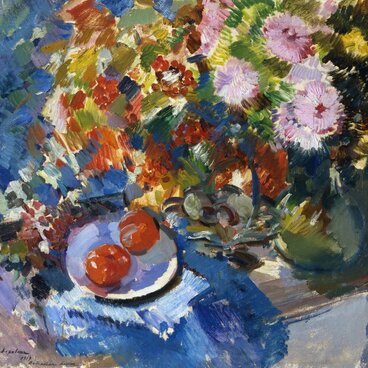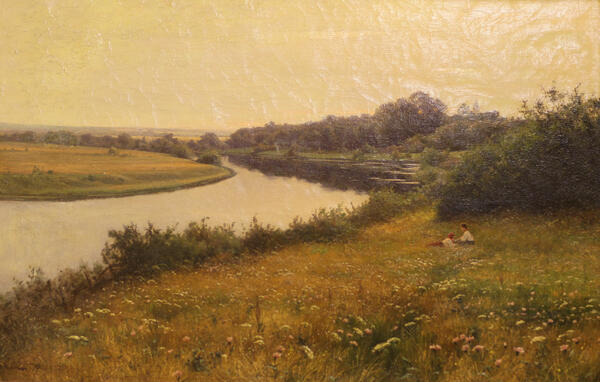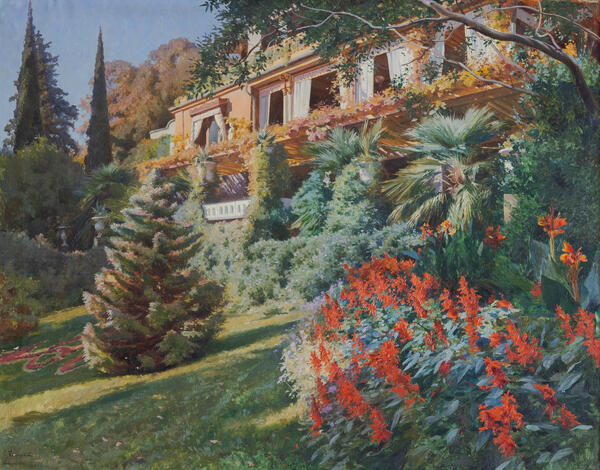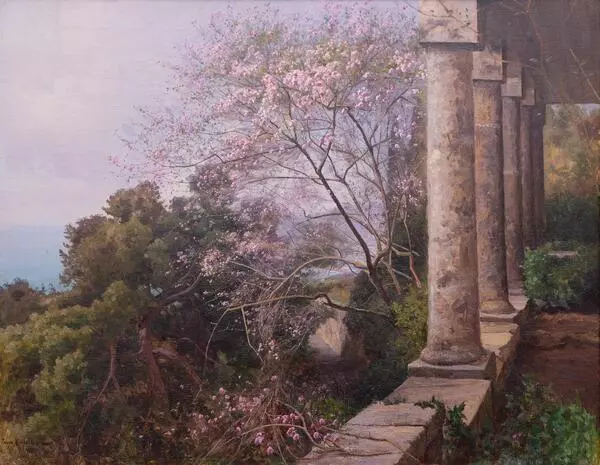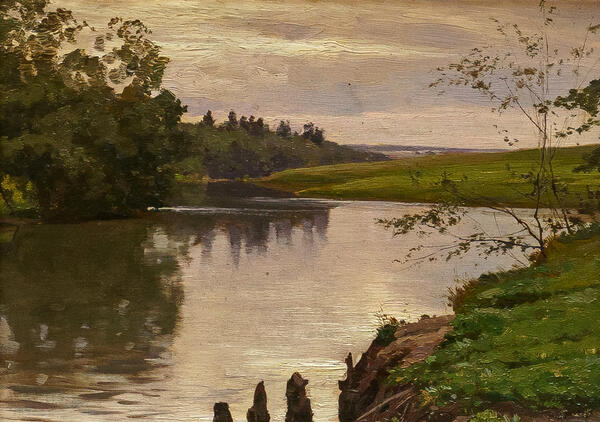The exhibition of the Sevastopol Art Museum named after Mikhail Pavlovich Kroshitsky features a landscape painted by Iosif Krachkovsky. In a small, picturesque landscape “pleasant to the eye and soul”, the artist drew with photographic accuracy, against the background of Crimean Mountains, Massandra Palace of Emperor Alexander III, which had been turned from a knight’s castle into a “fairytale palace”. It is located in Upper Massandra on the Southern Coast of Crimea. The palace belonged to Alexander III, then to his son Nicholas II. Such works made the artist very popular.
Iosif Evstafievich Krachkovsky (1854–1914), a Russian painter of Polish origin, was recognized during his lifetime, though today his name is almost forgotten. From an early age, the artist was fond of both painting and music. After graduating from the gymnasium, having studied at the conservatory for several years, Iosif Krachkovsky entered and later successfully graduated from the St. Petersburg Academy of Arts. His painting style which combined the traditions of academic and realistic landscape was largely formed due to the influence of his teacher, the professor of the landscape workshop Mikhail Konstantinovich Klodt.
From the 1890s, the artist worked a lot in Crimea: in Livadia, Massandra, and Oreanda, fulfilling numerous orders of the Russian nobility. The painter loved the nature of the south so much that after 1908, he went to Crimea, Italy, or the French Riviera every spring and fall. A recurrent feature in the works of Krachkovsky are the motifs of southern spring with its bright colors of blossoming trees and lush flowers, splendid estates, and imperial residences.
Iosif Krachkovsky, a man of impressive efficiency
and business aptitude, made a name for himself quite quickly as a talented
painter, actively participating in the exhibition life in Russia and abroad. In
1902, his personal exhibition was honored with a visit by the imperial family.
Nicholas II purchased a number of the master’s works for the Museum of Emperor
Alexander III. The visit resulted in numerous imperial orders and a keen
interest in his work on the part of Russian and European collectors.

